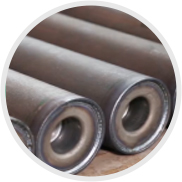 Afrikaans
Afrikaans  Albanian
Albanian  Amharic
Amharic  Arabic
Arabic  Armenian
Armenian  Azerbaijani
Azerbaijani  Basque
Basque  Belarusian
Belarusian  Bengali
Bengali  Bosnian
Bosnian  Bulgarian
Bulgarian  Catalan
Catalan  Cebuano
Cebuano  Corsican
Corsican  Croatian
Croatian  Czech
Czech  Danish
Danish  Dutch
Dutch  English
English  Esperanto
Esperanto  Estonian
Estonian  Finnish
Finnish  French
French  Frisian
Frisian  Galician
Galician  Georgian
Georgian  German
German  Greek
Greek  Gujarati
Gujarati  Haitian Creole
Haitian Creole  hausa
hausa  hawaiian
hawaiian  Hebrew
Hebrew  Hindi
Hindi  Miao
Miao  Hungarian
Hungarian  Icelandic
Icelandic  igbo
igbo  Indonesian
Indonesian  irish
irish  Italian
Italian  Japanese
Japanese  Javanese
Javanese  Kannada
Kannada  kazakh
kazakh  Khmer
Khmer  Rwandese
Rwandese  Korean
Korean  Kurdish
Kurdish  Kyrgyz
Kyrgyz  Lao
Lao  Latin
Latin  Latvian
Latvian  Lithuanian
Lithuanian  Luxembourgish
Luxembourgish  Macedonian
Macedonian  Malgashi
Malgashi  Malay
Malay  Malayalam
Malayalam  Maltese
Maltese  Maori
Maori  Marathi
Marathi  Mongolian
Mongolian  Myanmar
Myanmar  Nepali
Nepali  Norwegian
Norwegian  Norwegian
Norwegian  Occitan
Occitan  Pashto
Pashto  Persian
Persian  Polish
Polish  Portuguese
Portuguese  Punjabi
Punjabi  Romanian
Romanian  Russian
Russian  Samoan
Samoan  Scottish Gaelic
Scottish Gaelic  Serbian
Serbian  Sesotho
Sesotho  Shona
Shona  Sindhi
Sindhi  Sinhala
Sinhala  Slovak
Slovak  Slovenian
Slovenian  Somali
Somali  Spanish
Spanish  Sundanese
Sundanese  Swahili
Swahili  Swedish
Swedish  Tagalog
Tagalog  Tajik
Tajik  Tamil
Tamil  Tatar
Tatar  Telugu
Telugu  Thai
Thai  Turkish
Turkish  Turkmen
Turkmen  Ukrainian
Ukrainian  Urdu
Urdu  Uighur
Uighur  Uzbek
Uzbek  Vietnamese
Vietnamese  Welsh
Welsh  Bantu
Bantu  Yiddish
Yiddish  Yoruba
Yoruba  Zulu
Zulu bend pulley and snub pulley
Understanding Bend Pulley and Snub Pulley in Mechanical Systems
In the realm of mechanical engineering, the design and efficiency of belt-driven systems are paramount. Two crucial components that often come into play in these systems are the bend pulley and the snub pulley. Understanding their functions, applications, and significance can provide valuable insights into the operation of various machinery, from conveyors to manufacturing equipment.
What are Bend Pulleys?
Bend pulleys, also known as guide pulleys or bending pulleys, are essential in guiding the movement of belts within a mechanical system. Their primary function is to redirect the movement of the belt, which is crucial in ensuring that the belt remains aligned and operates smoothly. Bend pulleys are typically placed at points where the direction of the belt must change, such as in tensioning systems or complex routing setups.
One of the key characteristics of bend pulleys is their diameter. The size of the pulley affects the radius of the belt's bend, which in turn influences the stress and wear on both the belt and the pulley itself. A larger bend radius generally results in reduced wear, increasing the lifespan of both components. Additionally, a well-designed bend pulley can minimize the friction between the belt and pulley surface, enhancing overall efficiency.
Bend pulleys are often found in a variety of applications, including
- Conveyor Systems In these systems, bend pulleys help redirect the belt around corners or inclines. - Textile Machines Bend pulleys guide belts used in the process of weaving or knitting. - Automotive Applications In engines, bend pulleys play a crucial role in managing the serpentine belts that drive multiple components.
Exploring Snub Pulleys
bend pulley and snub pulley

In contrast to bend pulleys, snub pulleys serve a different purpose in the mechanics of a belt-driven system. Snub pulleys are primarily used to increase the tension in a belt, ensuring that it remains in constant contact with the driving pulley. This is particularly important in applications where slippage could lead to inefficiency or failure.
The placement of a snub pulley can have a significant impact on the performance of the system. By strategically positioning a snub pulley near the driven pulley, engineers can create additional contact points that improve friction and grip, leading to better performance. This additional tension is especially vital in systems where there are significant changes in load or where the belt may experience sudden forces that could lead to slippage.
Applications of snub pulleys include
- Belt Drives in Machinery Snub pulleys are often used to maintain proper tension in belt drives associated with motors and other machinery. - Industrial Equipment In manufacturing lines, snub pulleys help ensure that belts consistently engage with the necessary components to avoid downtime. - Agricultural Machinery Snub pulleys are often employed in tractors and harvesters to maintain the tension needed for efficient operation.
Conclusion
Both bend pulleys and snub pulleys are integral parts of many mechanical systems. While bend pulleys are essential for guiding and redirecting belt movement, ensuring minimal wear and efficient operation, snub pulleys play a critical role in maintaining tension and preventing slippage. Understanding the distinct functions and applications of these pulleys can lead to more efficient designs and operations in various mechanical systems.
In everyday usage, the importance of these components may be overlooked, yet they serve as the backbone of countless industries—from manufacturing to transportation. Continued advancements in engineering and materials science will no doubt lead to even more innovative uses for bend and snub pulleys, underscoring their significance in the dynamic world of mechanical systems. As we strive for enhanced efficiency and productivity, a greater appreciation for these components will not only benefit machine performance but also pave the way for future technological advancements.
-
Revolutionizing Conveyor Reliability with Advanced Rubber Lagging PulleysNewsJul.22,2025
-
Powering Precision and Durability with Expert Manufacturers of Conveyor ComponentsNewsJul.22,2025
-
Optimizing Conveyor Systems with Advanced Conveyor AccessoriesNewsJul.22,2025
-
Maximize Conveyor Efficiency with Quality Conveyor Idler PulleysNewsJul.22,2025
-
Future-Proof Your Conveyor System with High-Performance Polyurethane RollerNewsJul.22,2025
-
Driving Efficiency Forward with Quality Idlers and RollersNewsJul.22,2025





























